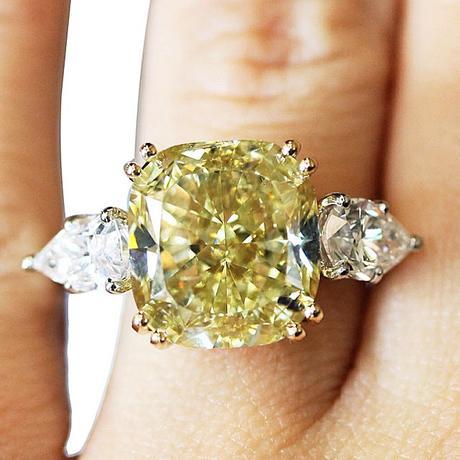When it comes to diamond shoppping, you’ll hear a lot about the 4 C’s. Cut, Color, Clarity, and Carat weight. But there are really 5 C’s you need to know about, and the 5th is Certificate. A diamond’s certificate can play a big part in its price and your piece of mind. Here’s why.

What is a diamond certificate?
A diamond certificate is a report issued by gemologists from a specific lab. The diamond is evaluated on several factors, including the stone’s measurements, clarity, color, polish, and brilliance, among others. Nearly every diamond, once mined, cut and polished, gets a grade before being sold to a jewelry retailer; the grade assures customers that they are getting what they’re paying for.
Who creates certificates?
There are diamond grading labs across the globe that produce certificates. However, the authority on diamond grading (and the certificate that makes a diamond most valuable) is the Gemological Institute of America. There are comparable labs (for instance the American Gem Society), but GIA’s certifications are most prevalent and preferred.
A lab that certifies a large number of diamonds, but is not held in such high esteem, is the European Gemological Laboratory. The EGL is still regarded as a strong authority of diamond certification, however an EGL certified stone is easily spotted by one characteristic – price.
Why the price difference? The GIA is seen as the elite standard for diamond grading, while the EGL falls slightly short for several reasons:
Consistency:
A certificate alone does not make a diamond – after all, that piece of paper is not ultimately what you’ll be wearing around your wrist or finger. When two different diamonds are for all intents and purposes identical, with one certified by GIA and the other by EGL, it seems like there’s no reason why the GIA diamond should cost more – but there is.
The extra cost associated with GIA diamonds are thanks to the lab’s consistency. A GIA lab certificate from L.A. is going to be consistent with one from New York. With EGL, there is an enormous amount of discrepancies between certificates from, say, Israel, versus one from New York; Simply put, EGL’s international labs have a reputation for having a looser interpretation of grading standards.
State of the Diamond:
A key difference in the certifications is EGL’s willingness to grade mounted stones. A stone set in its mounting may be hiding cracks, inclusions or other flaws behind its setting. GIA only grades loose stones so there are no hidden imperfections.
Turn Around Time:
Whereas the GIA process can take up to eight weeks, an EGL grading will take significantly less time. While the EGL certification almost guarantees a lower price point, the jeweler will not have to wait so long to recover the cost of purchasing the diamond from the wholesaler. In the time spent waiting for the GIA diamond to arrive back, the jeweler likely could have sold several EGL diamonds and made a greater profit.
Ultimately, the most important thing to remember in regards to certificates is to trust your jeweler. EGL stones are less expensive, but they’re also riskier – the diamond may not be of the quality its papers say. A GIA certified diamond will be more expensive than an EGL certified stone, but it guarantees a quality stone.
If you trust your jeweler, you can know you’re looking at a “fluffed up” EGL diamond that’s not really what its cert. says it is. And you’ll also be able to see a totally uncertified diamond next to a GIA diamond and see if one diamond really looks better than the other, regardless of what’s on the piece of paper.

